I recently attended ROSCon 2024 in the beautiful city of Odense, Denmark, from October 21st to 23rd. It was an amazing experience filled with insightful talks, workshops, and the opportunity to connect with fellow robotics enthusiasts. I arrived two days early to explore Odense—a charming city known for its focus on robotics, with well-known companies like Universal Robots and MiR headquartered there.
The conference was not cheap, but well worth the investment. I paid €125.44 for my flight to Copenhagen and back to Vienna, $250 for the convention, and an additional $50 for a workshop on the first day. The food was exceptional and included in the price, with drinks, coffee, snacks, and tasty lunch buffets provided throughout the day.
Here are some of my key takeaways and notes from the event:
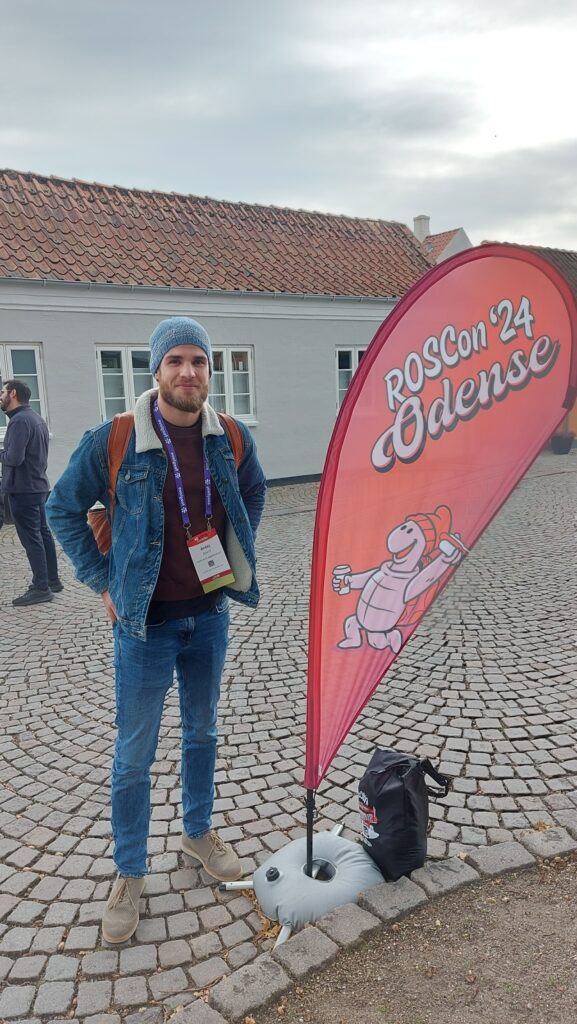
Tools and Software
PlotJuggler
PlotJuggler is a tool I discovered many people use for visualizing ROSBags. I recently tried using it for MQTT visualization, which is also supported, although I didn’t get it working immediately. It definitely seems like a good addition to my toolkit.
ROS2 Cookbook
Another cool GitHub repository I found is the ROS2 Cookbook by Mike Ferguson. It provides excellent explanations and code snippets for most ROS concepts. Topics covered include:
- Client Libraries
- rclcpp API
- Logging
- Nodes and Components
- Parameters
- Point Clouds
- Time
- TF2
- Workarounds
- rclpy API
- ros2launch
- rosbag2
- Networking (DDS & CycloneDDS)
- Documenting with rosdoc2
- CMake
- QoS
- Command Line Tools
- Packaging
- Limitations/Bugs
RAI Framework
I came across RAI, a flexible AI agent framework for developing and deploying Embodied AI features for robots. It includes features like voice interaction, customizable robot identity, camera access utilizing VLMs, summarizing state through ROS logs, and integration with LangChain. While I added it to my list, I’m not entirely sure why, so I’ll keep this point brief.
ROS4HRI
ROS4HRI is a GitHub organization that includes many useful human-robot interaction packages. It offers:
- hri_msgs: Base ROS messages for HRI perception.
- hri_actions_msgs: Base ROS messages for HRI actions.
- human_description: A parametric kinematic model of a human in URDF format.
- libhri: A C++ library to easily access human-related topics.
- pyhri: A Python library for the same purpose.
- hri_rviz: RViz plugins to visualize faces, landmarks, and 3D models.
- rqt_human_radar: An rqt plugin providing a top-down view of the robot’s social surroundings.
Specialized packages cover face detection, body tracking, voice processing, and more.
ROS2 Deliberation Technologies Workshop
On Day 1, I attended a full-day workshop called “Hands-On with ROS 2 Deliberation Technologies.” We learned about deliberation in robotics, which involves technologies necessary for high-level decision-making in autonomous robots. We covered several tools:
- BehaviorTree.CPP: Models behaviors as behavior trees.
- ros_bt_py: A Python alternative with a ReactJS-based web GUI.
- SkiROS2: An amazing framework where you define a world model, set goals, and it plans the actions needed to achieve those goals.
- FlexBE: Uses hierarchical state machines (HFSM) to model behaviors, offering good operator integration and an intuitive user interface.
- CONVINCE: A model-checking toolchain for autonomous systems.
microROS-on-the-cloud
I found an interesting project called microROS-on-the-cloud, showcasing micro-ROS on an ESP32-CAM publishing images. Although I’m not sure about its current status, it’s an intriguing concept.
O3DE Game Engine and Robotics Simulator
One of the biggest highlights was O3DE, an open-source game engine and robotics simulator. It has impressive ROS integrations, including tools for generating synthetic data for machine learning algorithms and sensor data simulation. I’m excited to explore it further!
BuildKit and ROS2 Docker Containers
They introduced BuildKit for improving the containerization of ROS2 Docker containers. I need to fact-check this point, but it seems promising for enhancing the build process.
Zenoh Middleware
A significant topic was the introduction of rmw_zenoh, an alternative to the current DDS middleware. It promises reliable and high-frequency image messaging and demonstrated controlling a robot in Germany from the convention in Odense with impressive response times. Zenoh seems to solve many issues associated with DDS and large messages.
Robotics Library (RL)
I discovered the Robotics Library (RL), a self-contained C++ library for rigid body kinematics and dynamics, motion planning, and control. It covers spatial vector algebra, multibody systems, hardware abstraction, path planning, collision detection, and visualization.
Other Notable Tools
- r2s: A Text User Interface (TUI) for interacting with various aspects of a ROS2 system. It’s intended as a supplement to the ros2cli suite of command-line tools. GitHub Link
- Micro-ROS Zephyr Module: A project aiming to port micro-ROS onto Zephyr for the Teensy, using CAN-FD as a transport layer. GitHub Link
Cool Robots and Companies
Robotize’s Robot
A cool robot from Robotize was showcased.
LG’s Zero Labor Home Robot
LG presented their Zero Labor Home Robot. Although it won’t be for sale, it can be requested for research and development purposes. It balances on two wheels, has image recognition, a depth camera, and a display for human-robot interaction. It demonstrated interaction with humans through pose and emotion detection, adapting its “face” accordingly. It also supports voice commands and smart home connectivity.
Bitcraze’s Crazyflie Drone
Bitcraze showcased their Crazyflie drone, demonstrating impressive visual localization skills based on fixed anchors in the room. The cool thing is that everything is open-source, and someone even built a micro-ROS version of their firmware.
Siemens’ PLC with ROS2
Siemens showcased a PLC integrating SIMATIC with ROS2, unlocking new potential by connecting the two. It’s exciting to see a company like Siemens stepping into the ROS2 space.
Unitree’s Robots
Unitree showcased their robot dogs and humanoid robot. The humanoid was surprisingly small and had to pause due to overheating, but the rest of the demo was impressive.
Leo Rover
Leo Rover displayed their robot development kit. It seems well-made, especially the new version that uses BLDC motors instead of DC motors, although it’s a bit pricey.
Luxonis
Luxonis showcased new 3D cameras with ROS2 integration. One interesting exhibit was a setup with about 20 cameras on one stick—apparently used for calibration!
Husarion
Husarion had some neat robots on display, some of which utilize micro-ROS.
PAL Robotics
Regarding the ROS4HRI package, one of the main contributing companies, PAL Robotics, showcased their amazing humanoid robots.
Clearpath Robotics
Clearpath Robotics showcased their outdoor and off-road mobile robots, including the popular TurtleBot 4.
Dexory
Dexory gave an amazing talk about some bug-hunting stories within ROS2. They emphasized the importance of logs—“LOGS LOGS LOGS!!! are important. Always. Everywhere.”
Asimovo
Asimovo showcased some cool projects documented and developed using their platform. They suggested using their projects in university courses; apparently, you can have an entire ROS2 workshop on their website for free.
Robotec AI
Robotec AI, based on the O3DE engine, is an amazing framework that enables automatic generation of 3D scenes based on text descriptions. They provide an interface to common large language models, including locally run models like LLAMA, to orchestrate behavior in the simulation.
Conferences and Resources
Awesome Robotics Conferences and Schools List
An important resource is the “Awesome Robotics Conferences and Schools List”. It’s a GitHub repository with a hosted website where all relevant robotics conferences and their respective countries are listed. There’s also a schools list with recommended universities and courses. Everyone can contribute via pull requests.
Eurobin Minulation Skill Versatility Challenge
I met someone who showed me the Eurobin Minulation Skill Versatility Challenge, which is a 3D-printed module with different manipulation tasks and an onboard processor to check if tasks have been fulfilled. Participants program mobile arms (usually cobots) to flip switches, open drawers, turn knobs, etc., and the machine checks if each test is passed. The best time is recorded and documented on the competition website. The challenge comes to the participants rather than the other way around, and each year the box is redesigned with a different challenge.
Big News: ICRA 2026 in Vienna
Excitingly, ICRA 2026 will take place in my hometown, Vienna!
Miscellaneous Highlights
- A blog post from Robot & Chisel that might be of interest: ROSCon24.
- Andino: An open-source differential drive robot designed for educational purposes. GitHub Link
- A paper comparing different ROS2 algorithms: “From the Desks of ROS Maintainers: A Survey of Modern & Capable Mobile Robotics Algorithms in the Robot Operating System 2”
- The IEEE Society approached me about an exclusive membership.
- New books introduced by FOSSBooks: “Forge Your Future with Open Source” and “Business Success with Open Source” by VM (Vicky) Brasseur.
- Happypose_ros: A ROS2 wrapper for a 6D pose estimation library. GitHub Link
- ARK Electronics showcased their products with ROS2 integration, leveraging micro-ROS. Website
Personal Reflections
The first talk was an amazing story from a roboticist who developed a machine used for scanning the veins in the arms of dialysis patients. This innovation helps doctors quickly determine suitable sites for shunts, reducing wait times and potentially saving lives. A fascinating design aspect was encapsulating the entire robotic arm in liquid since they use ultrasound for mapping.
Regarding Odense, I loved it there. It’s a small but beautiful city with a nice harbor, and the old town is full of charming brick buildings. There are lovely parks, and the people are friendly. It’s definitely cheaper compared to Copenhagen. Also, it’s cool that the city is so focused on robotics.
The first few days, I traveled alone, but then I met up with my friend Adam (also a member of this club), and we had a great time!
Last but not least, a few pictures of robots running around in the convention (sorry, I’m not good at taking pictures):
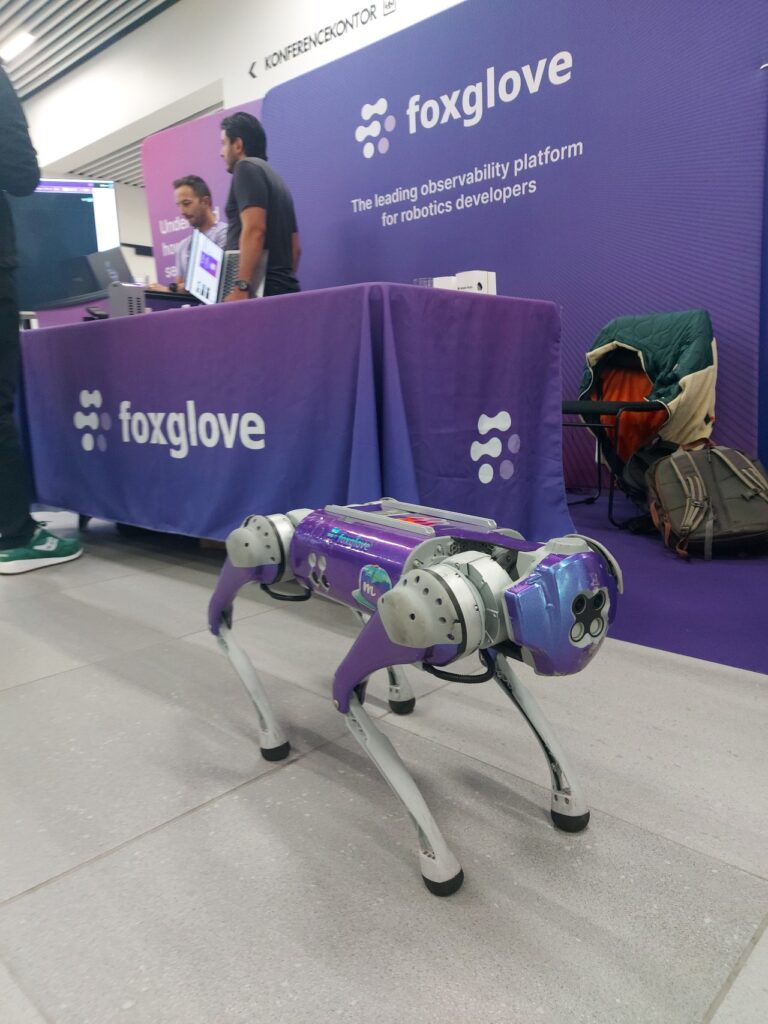
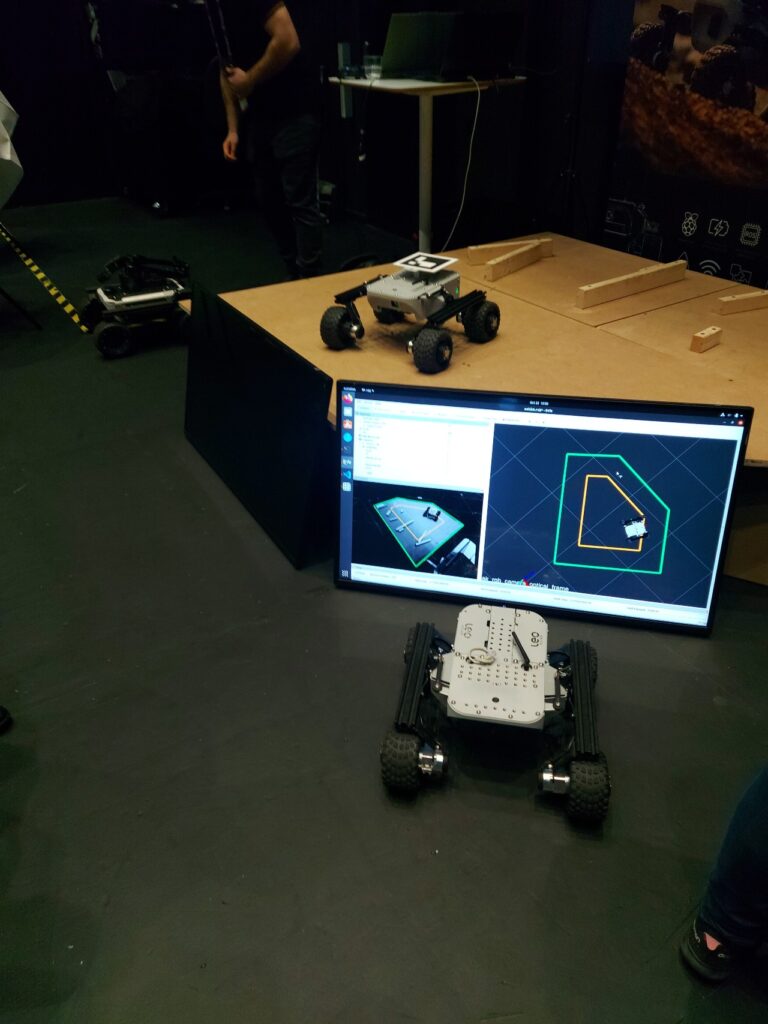
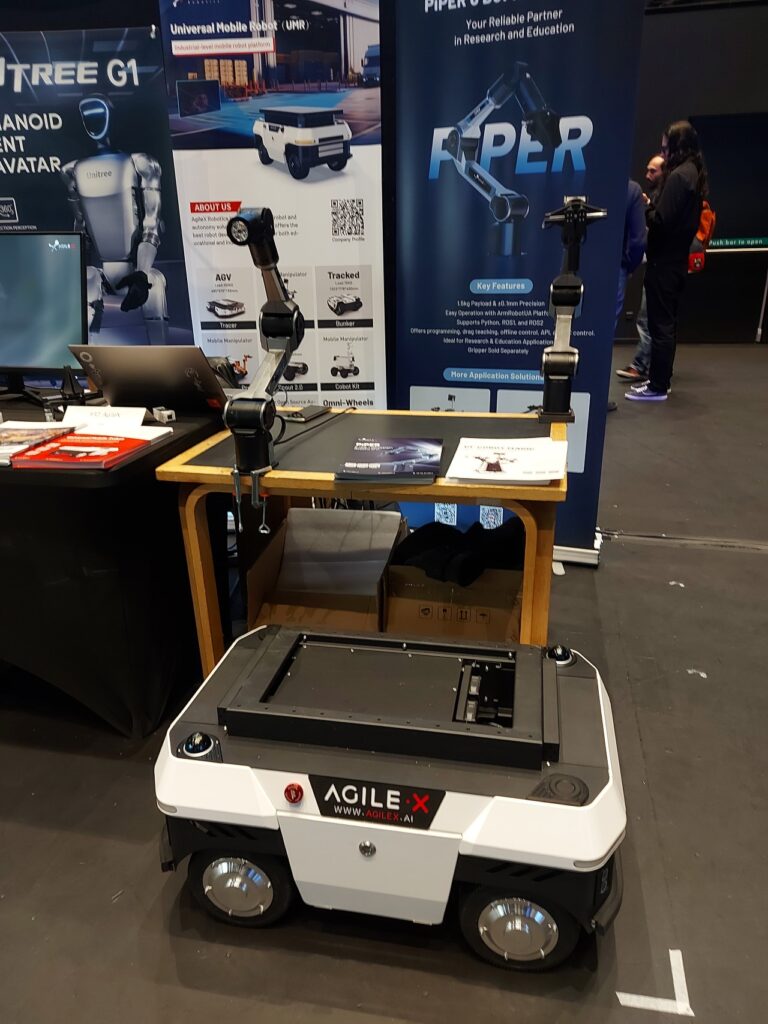
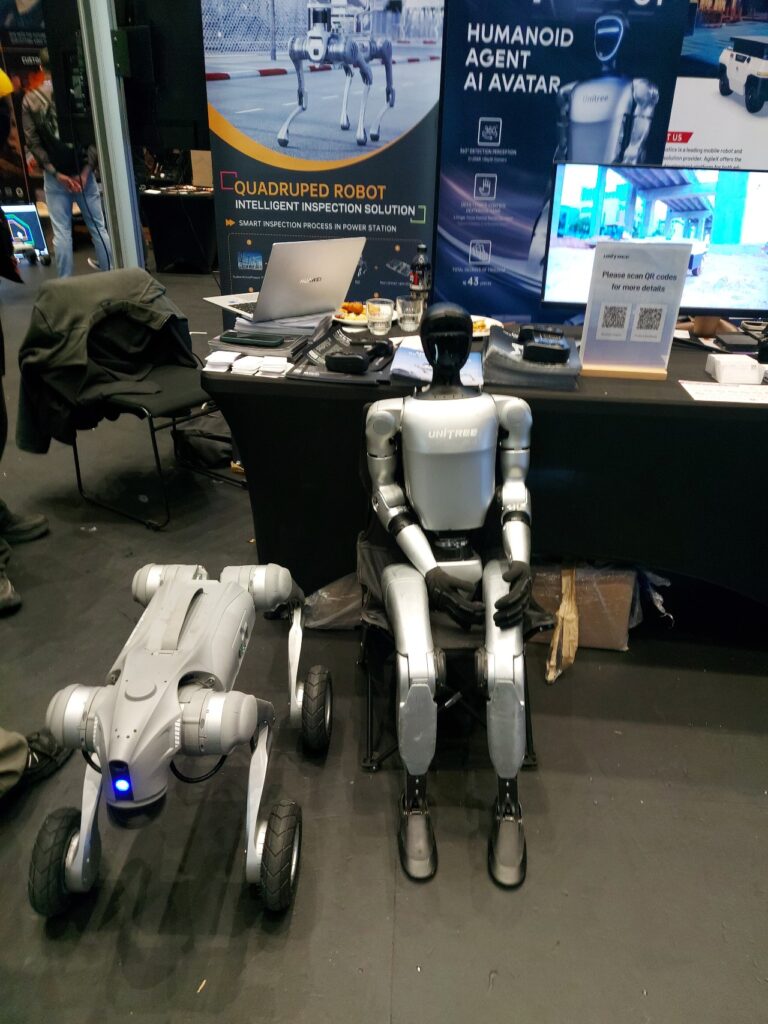
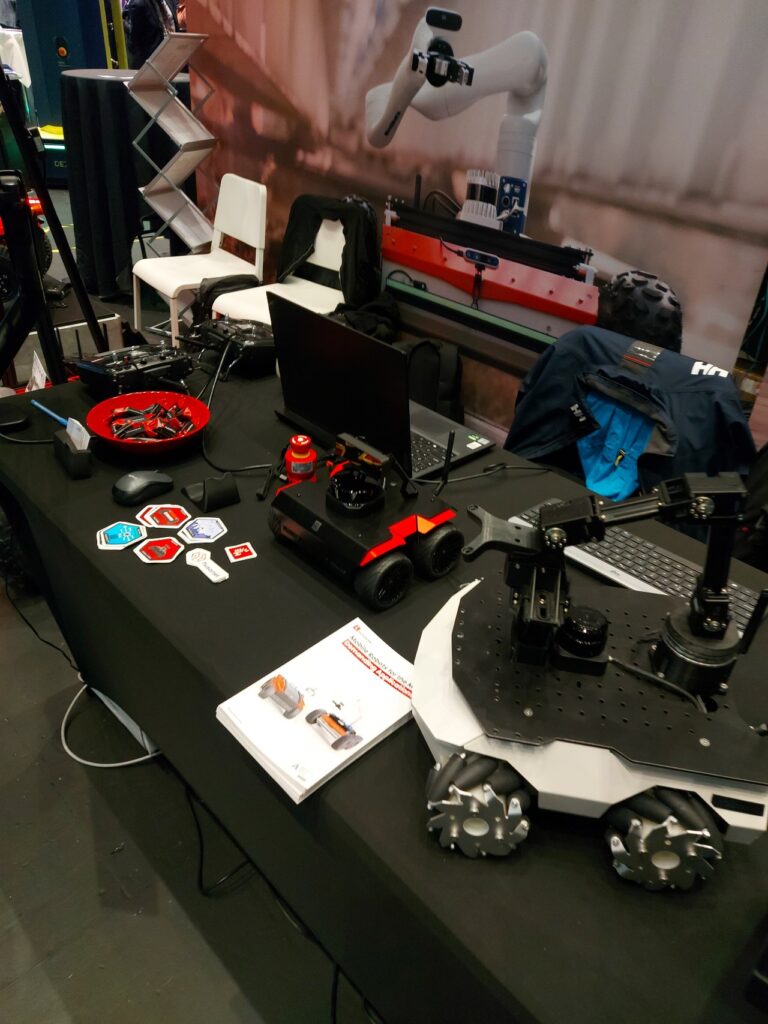

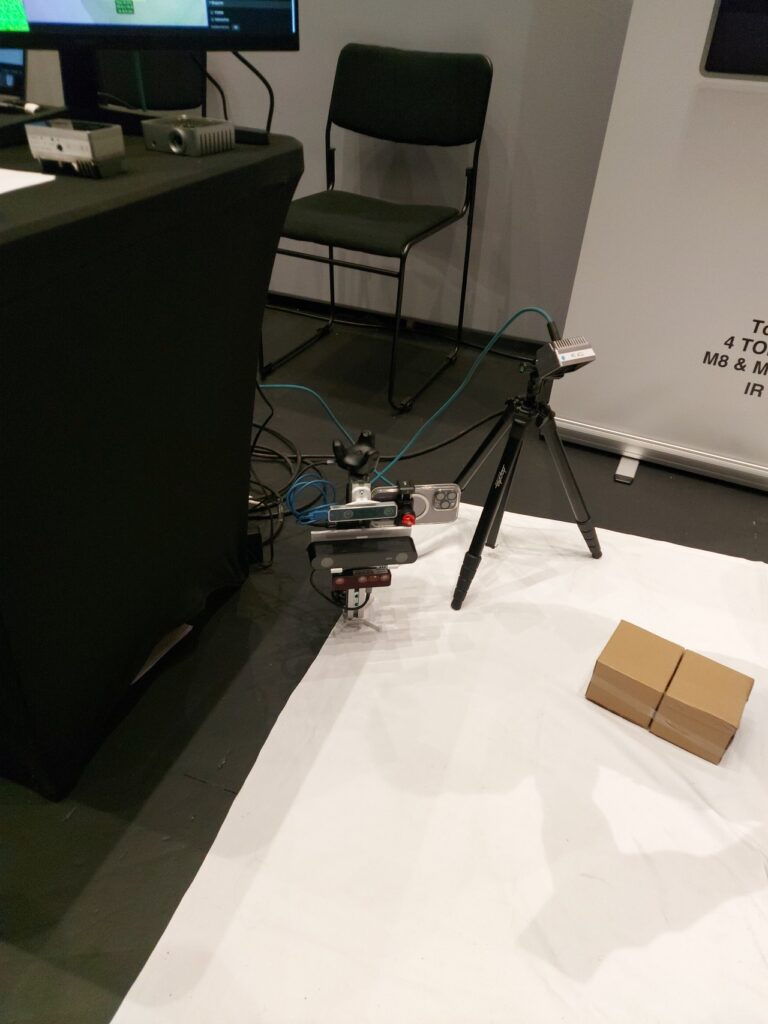
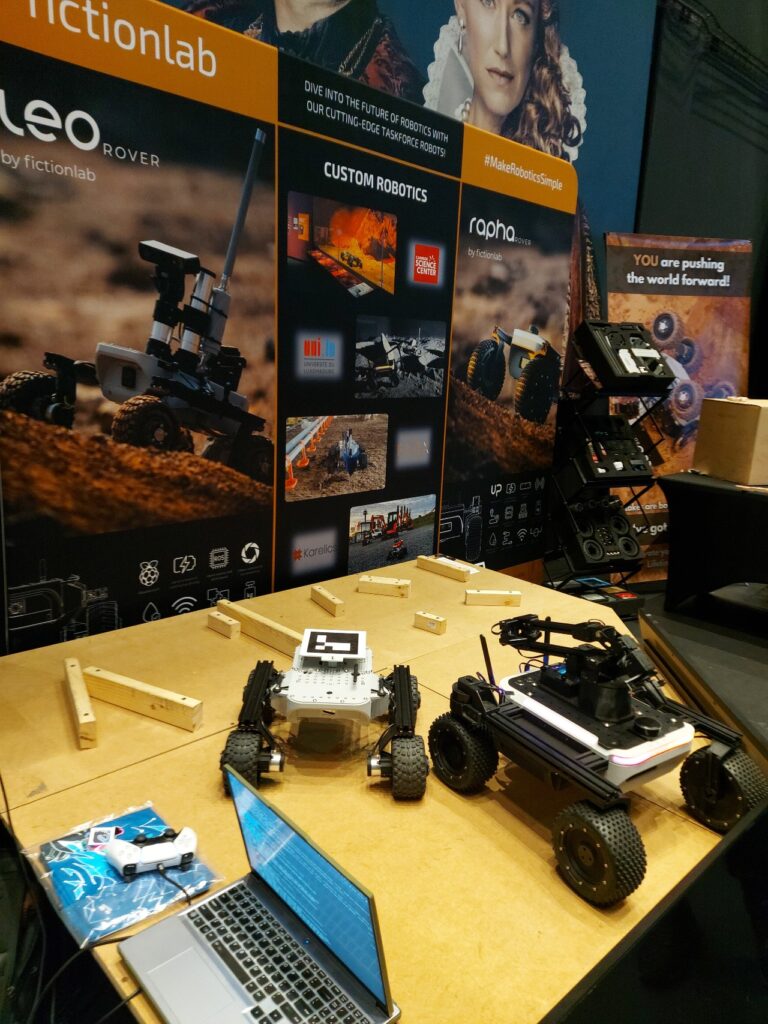
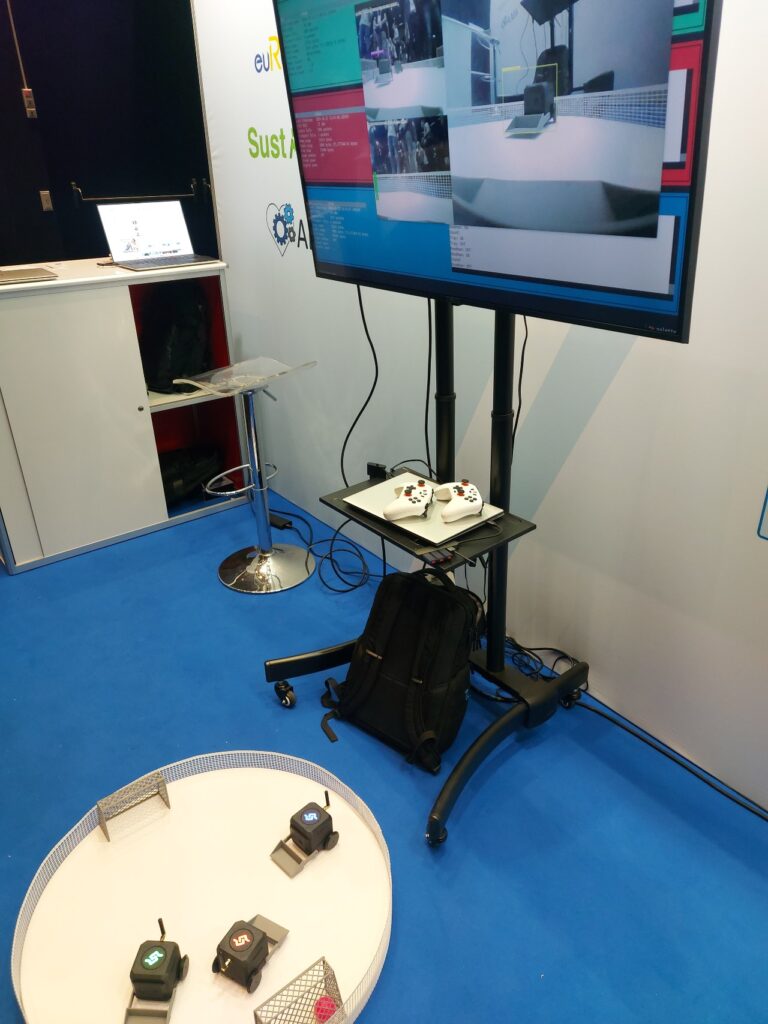
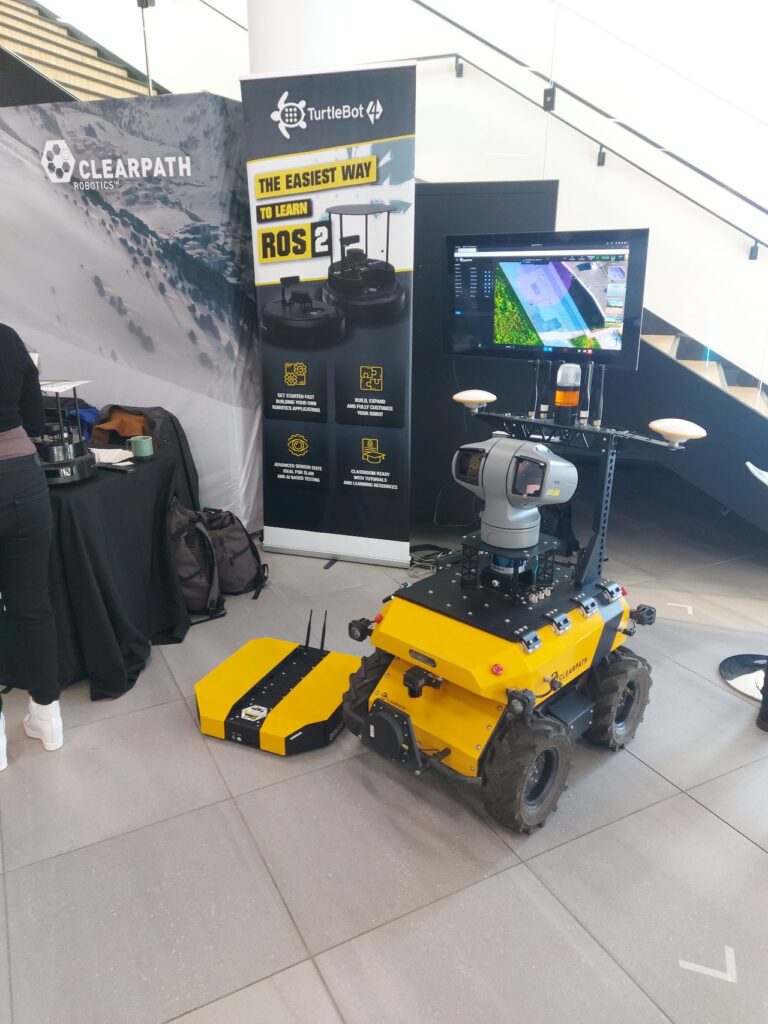

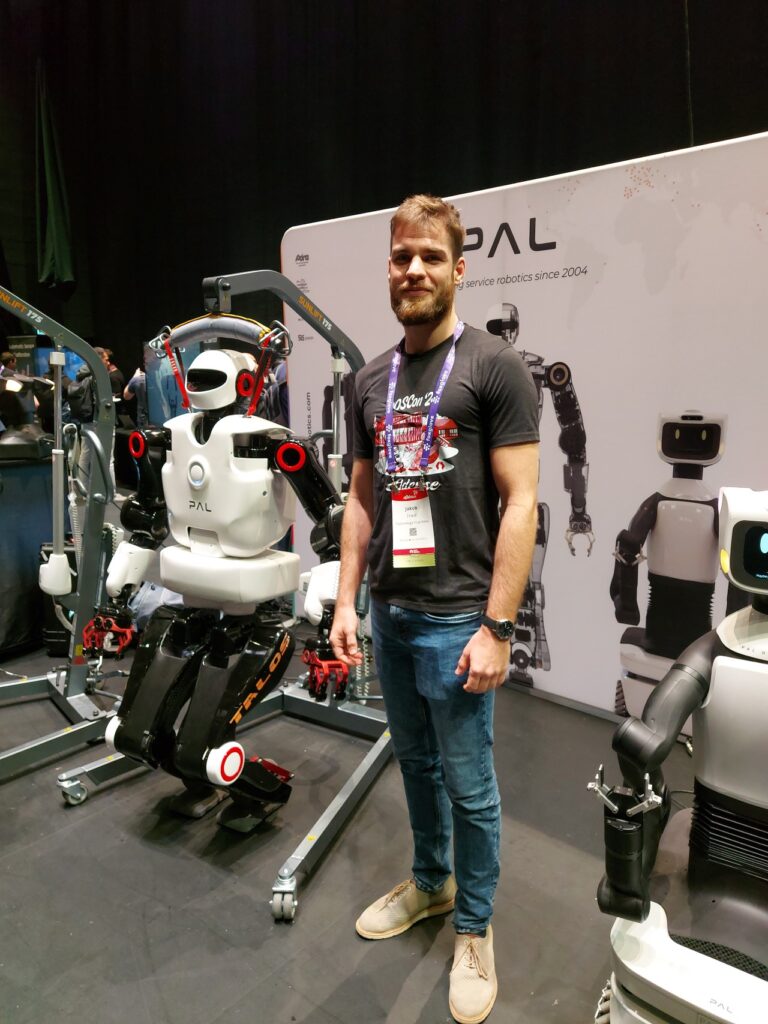
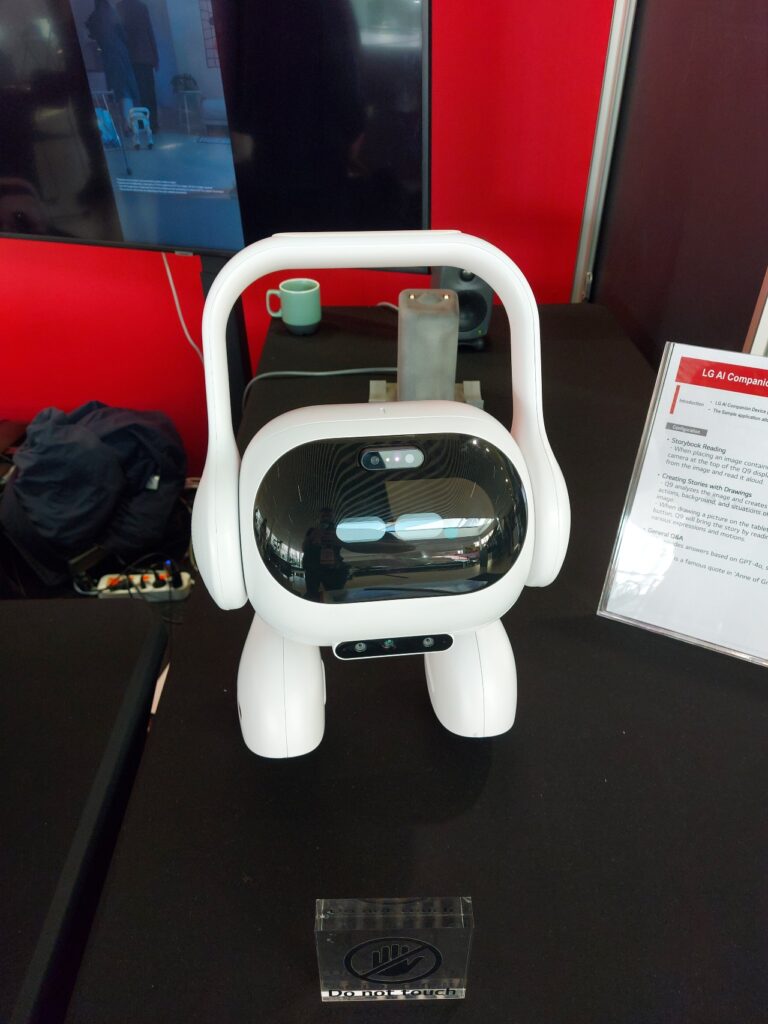
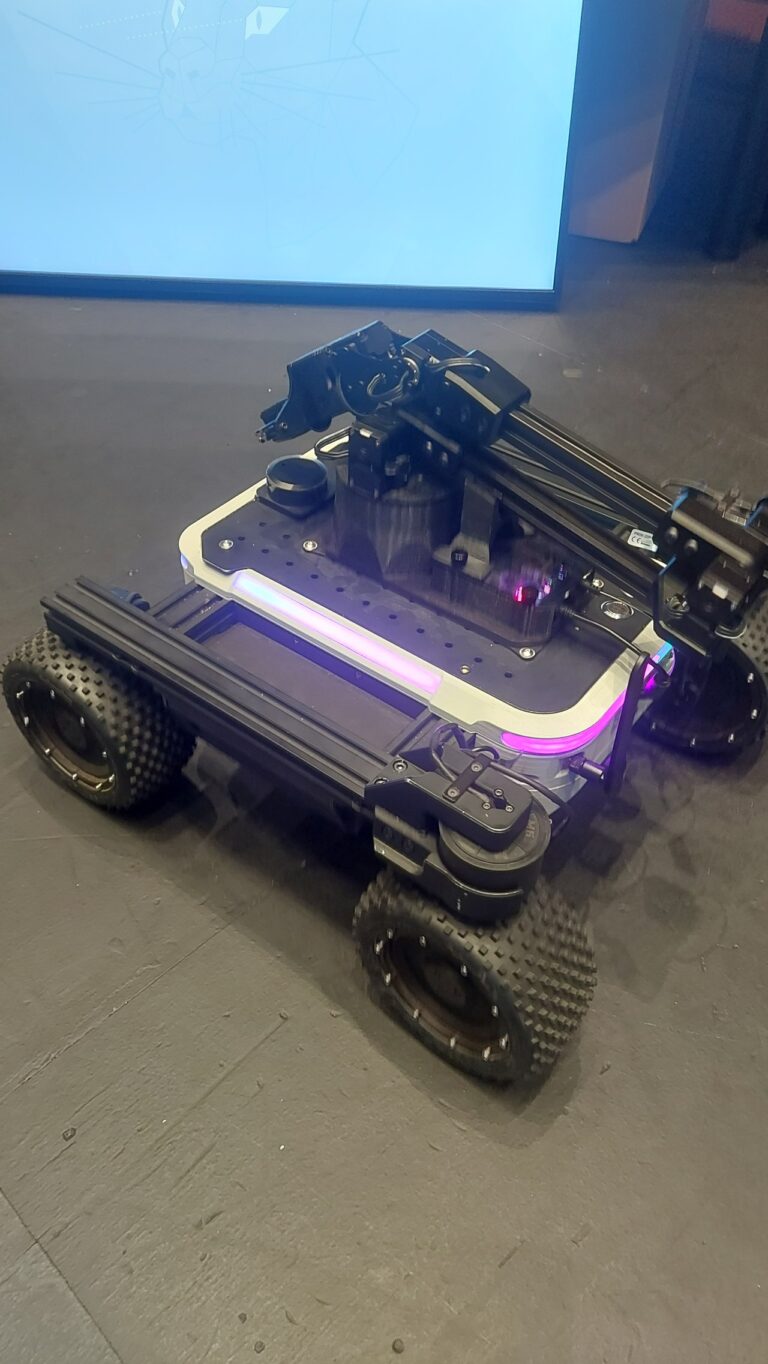
That’s it, goodbye and thanks for the fish!
All slides and videos are now available here! Also, here is the Vimeo link.